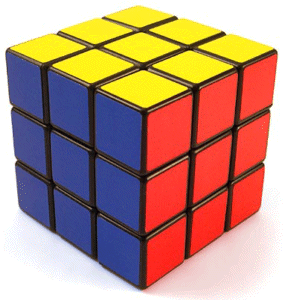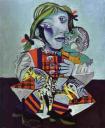
So what is patterning?
Patterning is simply a factor of:
1) Recognition.
2) Repetition.
3) Layering.
Recognition comes first
Imagine you’re in a city you’ve never been to before. Around you are cobbled stone streets. Hey, you’re in Rome.
But you’re hopelessly lost. The summer sun has long set, and you desperately want to get back to the hotel. But you can’t figure out where you are. This situation, as you’ve already worked out is a lack of recognition.
Of course, you know what comes next
You go back to the same cobblestone area the next day. And the day after. And then suddenly, you’re not even thinking about the way back to the hotel. Ah, but you are. Your brain has worked out a temporary map. And the repetition has helped you to get back.
Layering of course, is something we don’t pay attention to, at all
But it’s layering that really makes the difference. You see, recognition and repetition are core parts of your learning. But layering takes it to another level.
The first time you were lost, you didn’t see the beautiful flowering tree
Or the green paint on the window. You didn’t see that pizza place around the corner. But now you do. Your brain is beautifully layering colour, odour, sound, texture and tons of other stuff, that you’d find impossible to explain. And in a way impossible to re-create.
How do we know that we couldn’t re-create it all?
Because if someone told you to simply draw the scene, you’d only be able to re-create some of the scene. You’d miss out on many elements. You’ll miss out that faded poster on the wall. You’ll miss the ornately carved park bench. You’ll wonder how you didn’t see the bright red post box.
And if someone were to take you on this magical mystery tour...
The tour of the faded poster. The ornately carved park bench. And the bright red post box.
Then you’d enter the first phase: Recognition.
Of course, you’d see it again and again: Repetition.
And you’d start to recognise details. Far more details would enter your brain every single time. Aha!: Layering.
Now add recognition, repetition and layering at high speed.
And you have patterning.
Patterns are why you see a chair and know it’s a chair.
Why you listen to Chopin’s Prelude No.4 you’d remember it, if it was played to you again and again.
Why you see a child, and know it’s not your child.
That’s patterning.
Which is why you could recognise the Rubik’s Cube at the top of this page.
Your brain had seen it enough times, to tell you that it was indeed not any old cube.
But a Rubik’s cube.
And if that picture wasn’t of an actual cube, but a cake designed like a Rubik’s Cube.
Or furniture. Or just about anything. You’d still recognise the pattern.
Aha, you’re a genius.
Recognise the pattern.
And you’ve cracked the code.
But there’s still more work to be done.
It’s not enough to recognise a pattern. Or to crack a code.
But let’s leave it for another post, shall we?
For now I’d love it if you had any life stories, or comments or questions.
Feel free to fill in the comments box.

Imagine you went to a friend’s house today.
You’re in your friend’s kitchen.
And you see a chair.
And you sit down on that chair.
How do you know it’s safe to sit on that chair?
But even more interestingly, how do you know it’s a chair in the first instance?
Your brain worked out the pattern, didn’t it?
It figured out, that if the chair looked like a chair, then it must be a chair.
The chair you picked may be orange, and you’ve never sat in an orange chair before, but hey the brain still sees it as a chair.
And even if the chair didn’t have four legs. Even if it had just one central beam, your brain still sees the chair as a chair.
This is the simplicity of patterning
You see the chair. You sit on it.
A five-month old baby sees it.
And slams into it. Bumps into it. Stares at it.
Isn’t sure what to do with it.
The patterns are clear in your brain. The patterns ain’t that clear in the brain of that baby.
Which brings us to why some people seem so talented
They just see patterns we don’t see (not yet, anyway!)
But here’s the really frustrating part.
If you ask a ‘talented’ person what they’re seeing, they can’t explain what’s really happening.



So if you asked the famous artist Picasso, what patterns he saw before he drew a masterpiece, he may not have been able to give you an answer. And yet, he was seeing patterns.
But patterns at such high speed that most talented people can’t tell you what they’re seeing.
These um, talented people simply draw, or sing, or dance.
They can’t describe to you the pattern (in most cases).
So how do we know it’s a pattern after all?
Because of the repetition.
Picasso’s first drawing may not look exactly like the next, but try as he may, the next drawing will have an overlap of the first.
A dancer may do a completely different dance routine, but hey, there’s the style coming through. And what is style, but a pattern?
Artists, dancers, heck even criminals follow a pattern.
But because we can’t see the pattern at normal speed, we think it’s talent.
Yes, you have a talent for spotting a chair.
Yes, you have a talent for sitting down on a chair.
But can you explain that talent to me?
No you can’t.
Because it’s happening too fast in your brain.
And that’s exactly what’s happening in the brains of so-called talented people.
But let’s do the impossible in the posts to follow, shall we?
Let’s slow down patterns so that you can see them.
Aha…now that would be something eh?
Then the so-called talent wouldn’t be so magical after all.
But how do we slow things down? That’s the question.
And yes, there’s an answer.
Amazing as it may sound, there’s a simple, logical answer.
But hey, that answer will come in another post.
For now, look around and see your magnificent brain. And how it seems to recognise patterns all the time.
You are indeed talented at recognising patterns.
But we’ll go one step further. We’ll do stuff that seems impossible.
Like draw cartoons. Or write jokes. Or do things that seem um, quite out of your current league.
Watch this space.
And feel free to ask questions. Your questions will help me. 🙂

We all believe that Einstein was talented.
He wasn’t.
He just hit his forehead a lot.
The Slap On The Forehead: What does it mean?
Einstein wasn’t talented. He developed pattern recognition. He worked out a pattern.
Once you see the clarity of the pattern, it’s like night and day. You’re not bumbling around in the dark. Suddenly everything seems easy. In fact, you wonder why everyone else doesn’t see it the same way. Why are they bumbling in the dark, you wonder.
Every ‘talented’ person has had this ‘aha-moment’ several times in their life. They are doing something—often something disconnected to their ability—and then it hits them. The pattern becomes super-clear.
And they hit their forehead.
That hitting of forehead is a moment when the brain recognises a pattern that others have failed to see. Any ‘talented’ person will tell you that the pattern has existed forever. And that they’ve just failed to see it. Of course, so have the others around them.
Because the ‘talented’ person is the first to see the pattern in this specific way, they are called ‘talented.’ But truly talented people know and recognise the forehead moment. They know it’s the moment that they finally recognise a new direction. Or to put it another way, another pattern.
You can do this while driving a car
Let’s say we wanted to go from my house to the city in peak traffic. No matter how bad the weather, I can get you to the city from my house about 40 cars ahead of anyone who sets out at the same time, from the same destination. It doesn’t mean that I’m talented at driving. It means that I’ve recognised a pattern.
I’ve worked out exactly the spots you need to change lanes. Yes, the exact spots. Changing lanes at those specific spots will get you about 40 cars ahead. Which is handy, when you’re in a hurry. But you know what? How do you get 600 cars ahead?
It’s called ‘taking the bus’.
The bus has its own freeway unhindered by traffic. It can get you to the city 600 cars ahead.
Now you don’t see that as a talent, do you? But it is? It’s the ability of the brain to recognise a pattern.
Pattern 1: Do what you’ve always done.
Pattern 2: Change lanes at specific points and get 40 cars ahead, every single time.
Pattern 3: Get on the bus, and get 600 cars ahead. Every single time.
This pattern recognition is what we call the forehead moment.
That duh sound you hear, is the new direction unfolding.
Once you work out the new direction, nothing is the same.
And other car drivers either follow you (like they did with Einstein)
Or they take the bus.
Or they call you talented, and do what they’ve always done 😉

There are many ways to define talent. Most of them are wrong.
Here’s how one dictionary defines talent:
| 1. |
a special natural ability or aptitude: a talent for drawing. |
| 2. |
a capacity for achievement or success; ability: young men of talent. |
| 3. |
a talented person: The cast includes many of the theater’s major talents. |
| 4. |
a group of persons with special ability: an exhibition of watercolors by the local talent. |
Natural ability? Don’t make me laugh.
A capacity for achievement? Are you saying one person has a better capacity than the other? On what basis?
Special ability? Special, why special. Does this mean no one else can do this specific task? Or have this talent?
The problem with the definition, is that no matter where you look, you find ‘talent’ or ‘creativity’ to be defined in a way that’s horribly inaccuarate. Because the real definition of talent (and I’m typing this at the top of my head—because I’m so um, ‘talented’) runs something like this:
Talent is the combination of many emotions, memories, patterns and repetitions, implemented at high speed
You see what’s happening in this definition. We’re talking about emotions, and memories and stuff that doesn’t automatically assume that one person is ‘more gifted’ than another. That one brain doesn’t necessarily have less powerful hardware than another brain. But before we go into the depths of ‘hardware and software’ of the brain, let’s look at the concepts of emotions, patterns, memories and repetition. And what high speed has to do with all of these factors.
But for now, you have a definition, at least.
Feel free to disagree 🙂







